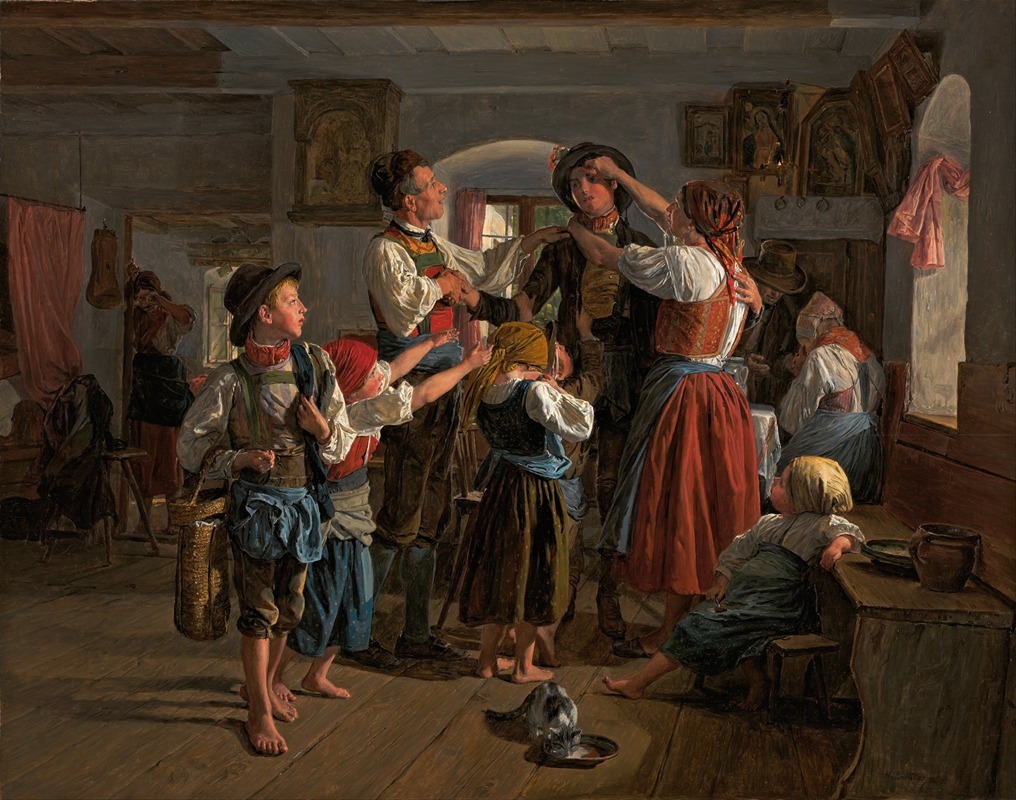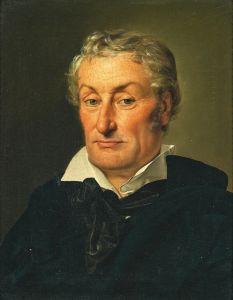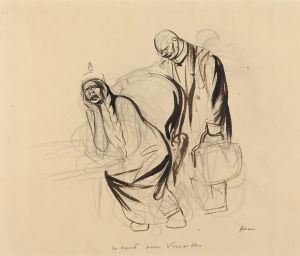
The Conscript’s Farewell
A hand-painted replica of Ferdinand Georg Waldmüller’s masterpiece The Conscript’s Farewell, meticulously crafted by professional artists to capture the true essence of the original. Each piece is created with museum-quality canvas and rare mineral pigments, carefully painted by experienced artists with delicate brushstrokes and rich, layered colors to perfectly recreate the texture of the original artwork. Unlike machine-printed reproductions, this hand-painted version brings the painting to life, infused with the artist’s emotions and skill in every stroke. Whether for personal collection or home decoration, it instantly elevates the artistic atmosphere of any space.
Ferdinand Georg Waldmüller was an Austrian painter known for his contribution to the Biedermeier period, a time in the early 19th century characterized by a focus on middle-class sensibilities and a penchant for realism and detail in art. One of his notable works is "The Conscript’s Farewell," a painting that exemplifies his skill in capturing the nuances of human emotion and the subtleties of everyday life.
"The Conscript’s Farewell" is a poignant depiction of a young man bidding farewell to his loved ones as he prepares to leave for military service. This theme was particularly resonant during Waldmüller’s time, as conscription was a common occurrence in 19th-century Europe, and many families faced the emotional turmoil of sending their sons off to serve in the military. The painting captures this moment of departure with a sense of realism and emotional depth that is characteristic of Waldmüller’s work.
In the painting, Waldmüller employs a meticulous attention to detail, a hallmark of his style. The setting is typically a rural or domestic scene, reflecting the Biedermeier interest in the everyday lives of ordinary people. The figures in the painting are rendered with a lifelike quality, their expressions and gestures conveying a range of emotions from sorrow to resignation. The use of light and shadow in the painting enhances the mood, highlighting the emotional gravity of the moment.
Waldmüller’s ability to convey emotion through composition and color is evident in "The Conscript’s Farewell." The arrangement of the figures, the interplay of light, and the careful attention to the details of their clothing and surroundings all contribute to the narrative of the painting. The viewer is drawn into the scene, invited to empathize with the characters and to reflect on the broader social and historical context of conscription and its impact on families.
"The Conscript’s Farewell" is also notable for its reflection of the socio-political climate of the time. During the 19th century, Europe was marked by numerous conflicts and military campaigns, and conscription was a reality for many young men. Waldmüller’s painting captures the personal side of this historical phenomenon, focusing on the human cost of war and the emotional toll it takes on individuals and families.
Ferdinand Georg Waldmüller’s work, including "The Conscript’s Farewell," is celebrated for its technical proficiency and its ability to capture the essence of the Biedermeier period. His paintings are appreciated not only for their aesthetic qualities but also for their insight into the social and cultural dynamics of 19th-century Austria. Waldmüller’s legacy as a painter is marked by his commitment to realism and his skill in portraying the human experience with empathy and precision.
"The Conscript’s Farewell" remains an important work in Waldmüller’s oeuvre, exemplifying his mastery of the genre and his ability to convey complex emotions through the medium of paint. It stands as a testament to his artistic vision and his contribution to the rich tapestry of 19th-century European art.


















